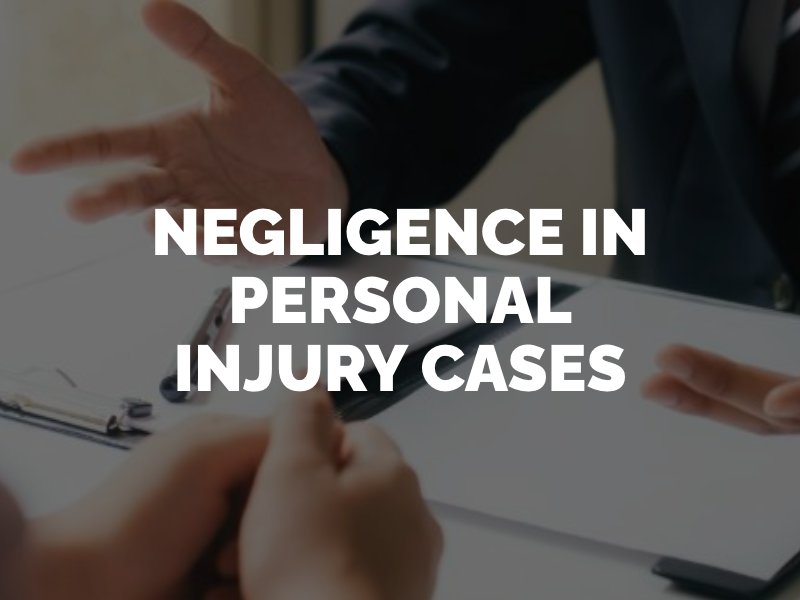The Role of Negligence in Personal Injury Cases
Every day, thousands of people get injured in severe accidents that are entirely preventable. Behind most of these accidents is negligence. Understanding negligence from a Los Angeles personal injury attorney, particularly in the context of the civil justice system, can help you identify your rights and legal options if you get injured due to the actions of another party in California.

Defining Negligence
If someone is negligent, it means that he or she is not acting with the amount of care that a reasonable and prudent party would in the same or similar circumstances. Negligence can refer to any act or omission that is done despite a foreseeable risk of harm to others. It may not be an intentional act of wrongdoing, but it can still impose liability on the negligent party.
Types of Personal Injury Cases Involving Negligence
Acts of negligence, carelessness, recklessness or a wanton disregard for the safety of others can all lead to significant and harmful accidents.
Common examples include:
- Motor vehicle accidents
- Slip and falls
- Medical malpractice
- Workplace accidents
- Construction site accidents
When it can be shown using evidence that one person’s negligence caused harm, injury or death to another person, the negligent party can be held liable. This means he or she will be financially responsible for the victim’s related losses.
What Are the Four Elements of Negligence?
The burden of proof in a personal injury case is “based on a preponderance of the evidence,” meaning enough to prove that the claim being made is more likely to be true than not. The plaintiff or filing party must show proof of negligence to receive financial compensation from the defendant or accused party.
Proving negligence requires evidence of four elements:
- Duty of care owed: the defendant had a legal responsibility to act in a way that would reasonably prevent harm to the plaintiff.
- Duty of care breached: the defendant violated the duty of care through a negligent or wrongful action or failure to act.
- Causation: there is a cause-and-effect relationship between the defendant’s breach of duty and the accident and injury in question.
- Damages: the plaintiff suffered real losses because of the defendant’s negligence.
Proving negligence and holding another party accountable for an accident in California requires evidence. This may include accident reports, witness testimonies, photographic and video evidence, and expert testimony.
An Attorney’s Role During a Negligence-Based Personal Injury Case
It can benefit you in many ways to hire a Los Angeles personal injury attorney for your California case. One advantage is professional assistance in proving negligence. A personal injury lawyer will know how to investigate your accident to determine fault and collect evidence against one or more liable parties. This can include visiting the scene of the accident, interviewing witnesses and hiring accident reconstruction experts.
An attorney can present evidence in a convincing way and use compelling storytelling techniques to improve your odds of success. An attorney will also know how to deal with insurance companies that may attempt to defend themselves against negligence claims by blaming you for the accident.To learn more about the role that negligence plays in your specific personal injury case in California, contact Rose, Klein & Marias LLP for a free consultation with an attorney.
